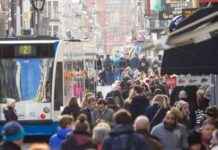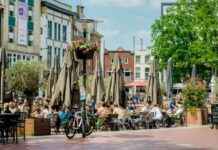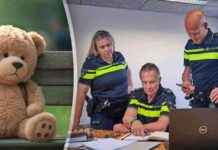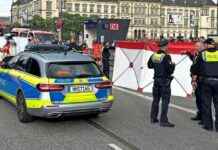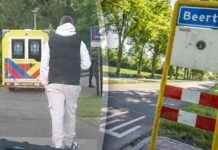At six in the morning the square at the entrance to the Vatican Museums is empty. Where people normally wait hundreds of meters along the mighty wall on Viale Vaticano, there is only yesterday’s rubbish. Rome’s street cleaning has not yet started work.
There is a rumble at the door, heavy lock noises can be heard, then the door opens, a man with a bunch of keys in his hand waves. The city may still be asleep, but in the Vatican the museum wonders are already waiting for amazed visitors. Whoosh, in. Because, very importantly, the gate closes again immediately. Our group is here outside of regular museum hours. Rome is the most amazing city in the universe anyway, but it could do with a little more.
The Vatican is many things: Catholic world center and residence of the popes, miniature state and ceremonial site, power district shrouded in mystery and hoard of eternal treasures. Holy and urgent at the same time. Global and extremely local. Incredibly beautiful and definitely triggers a bit of a shudder.
Anyone who looks around the Vatican sees the busy work of the church, the great machinery and the small effects, even if it is only the matter of course with which nuns, priests, dignitaries walk through the city and do not attract attention at all. Superficially, the visitor to Rome may know all of this: the crowds on St. Peter’s Square, the hustle and bustle in St. Peter’s Basilica, the sellers of religious kitsch. But there is still a lot to discover.
Around 25,000 visitors stroll through the Vatican Museums every day, before the pandemic there were more. A special tour is now possible via the Get Your Guide booking platform: going through the museums in the morning before all other visitors with a special guide (see below).
Once inside the Vatican, we are greeted by Gianni Crea, 50. He is wearing a black suit, black shoes and is also holding a bunch of keys. Crea is the highest of the eleven Vatican Clavigeri, the senior key master, and makes sure that the almost 3000 keys of the Vatican open the doors every day and close them again in the evening.
The Clavigero leads first into the vault. Most keys are surprisingly old-fashioned, with large or small beards, such as for grandma’s cupboard or a long-forgotten registry office. Of course the Vatican is well protected, there are scanners, cameras, heat sensors everywhere, but most doors are noisily closed twice with these old keys, including a little jerking, pulling, pressing.
The Clavigero opens a small extra vault. Inside is an envelope. Inside, you can easily feel that there is a key without a number. He will open the Sistine Chapel. Because there is only one copy of it, the protocol is strict – every evening the key is put in the envelope, locked, sealed, signed.
It is an incredible privilege to be able to walk through the doors and corridors so early and practically alone. A homeowner preference, in this case a papal sentiment, just without the white robe. Gianni Crea presents the right key in front of each gate, the doors can be opened with a jerky noise, as befits old buildings. Close twice, click, click, then pull. The oldest still active key, number 401, is from 1770. For traditional reasons alone, there should be no new locking systems, says Crea.
At this early hour, the ropes around the statues are still missing in the Belvedere courtyard. We are faced with the famous first-century Laocoön group, found in a vineyard in 1506. The Clavigero tells of Laocoon’s false right arm, which – added after 1506 – was stretched out for a long time. Only in 1905 was the right arm found and replaced.
We are now allowed to walk around the mighty sculpture. The wrong arm is indeed hanging behind Laocoon’s imposing back; a good place to keep after so many centuries spent together. Normal visitors do not have this opportunity, because the barriers will be set up soon.
Gianni Crea says that only the Pope and three other men in order of precedence are allowed to appear here unannounced or in the evening. It rarely happens. The cardinals must also register in advance. Crea began working at the Vatican as a student, after ten years in the service of the Key Master he was appointed Chief Coordinator.
Of course, the supreme principle of the Clavigero is solid restraint and discretion. His speech is often airy vagueness. He likes to talk about how much it touches him to see the astonishment of the visitors when they enter the halls, this mixture of emotion in the face of cultural wealth, humility, fascination and gratitude to be able to stand here and go right now. He’s looking at us now. We nod. It is exactly like that.
We enter the 120 meter long Gallery of Maps in the dark and walk right into it, the Key Master disappears, only his footsteps can be heard. A flickering of the flashlight can be seen, which sometimes hits the floor, sometimes the walls. With the light, the splendor that is otherwise just there comes out, as if it were the first time.
Huge topographical maps of cities and islands are painted on the walls. We open the windows to let in more light. The effect is stronger than the content at this moment. Great stage moments with all the theatrics: curtain up, jaw dropping, amazement.
Then we stand in front of the inconspicuous wooden door to the Sixtina. Up a few steps, the door could also lead to the lumber room. The envelope is torn open, the key put in the lock, it is solemn and at the same time a bit banal, a far less ostentatious approach than before.
The Clavigero again leads the way with his flashlight, the ceiling of the chapel is in darkness, and Michelangelo’s Last Judgment appears briefly. Even in the accidental section, the fresco spreads its powerful drama.
The Sistine Chapel with Michelangelo’s paintings leaves no one unmoved, no matter the time of day. Here, according to a strict ritual, the new pope is elected. This morning, it seems as if the splendor is reserved for the individual visitor only. Doesn’t Christ at the Last Judgment stretch his mighty right arm a little more than usual? Is the distance between man and God in the creation of Adam particularly small today? Do the fingers move?
There’s a candy wrapped in paper in the corner, the cleaning crew wasn’t there yet. I’ve never been so touched by a piece of candy lying on the floor. In general, the floor of the chapel. Who has ever seen him in his splendor for all his legs and shoes, I think. And: Isn’t it far too mundane to think of feet here instead of Michelangelo and the eternity of art? Is that appropriate?
The way back into the world is not easy. It is now almost eight o’clock. Out of the sacred halls and into the streets, variety is needed. The Borgo begins close to the Vatican, and the district extends to the Castel Sant’Angelo. A narrow alley runs through the middle. The religious shops here have less kitsch in stock than the shops around St. Peter’s Square. Numerous nuns and monsignori hurry along the cobblestones, some with shopping bags, others with briefcases. A pleasantly quiet street lined with drinking fountains. Now espresso.
If St. Peter’s Basilica seems too hectic or the queue on St. Peter’s Square too long, German speakers can visit the most beautiful, restricted-access alternative of the Vatican. From St. Peter’s Square, turn left to the entrance gate. Two Swiss Guards stand in front of it. “Hello, I would like to go to the Campo Santo Teutonico.” The guardsman replies with a French accent: “Yes, you can come in here.” Access to the German cemetery is only granted to those who ask the guardsmen to speak in German.
Right behind the police station, a gate leads to the cemetery. The small walled area is shaded by tall cypress trees, lush greenery throughout. More of a garden than a graveyard. Everyone who has been there raves about it. It’s like stepping into a completely different world and certainly not the Vatican – a half-forgotten, half-enchanted place.
Suddenly the chirping of the birds can be heard, a cat meows, perhaps because it is out for the birds. The bell of St. Peter’s Basilica strikes with a force that is close and far at the same time. Peacefulness emanates from the old burial sites, seclusion from the world and contemplation, also deceleration and reflection. It is said that Joseph Ratzinger often visited the cemetery during his time as cardinal. And what supreme churchman would be more German than the future Pope Benedict XVI?
The German and Flemish Speaking Countries Cemetery was originally intended for pilgrims from the Holy Roman Empire of the German Nation who died in Rome. Visitors walk between flowers and palm trees in the square, reading the German inscriptions and names. 1400 are preserved, including the German nobles, such as Sophie von Hohenlohe (died 1836) or Carolyne zu Sayn-Wittgenstein (died 1887), the partner of the composer Franz Liszt. German is also spoken in the toilet, and people say thank you heartily with a “Vergelt’s Gott”.
Finally, a visit to Gammarelli, located in the old town behind the Pantheon, is worthwhile. A serious business, far from religious kitsch and questionable souvenirs. In the shop window lies a pileolus, the classic white headgear worn by the Pope, but also by other dignitaries. Next to it a black hat, tassels, stockings.
Gammarelli is considered the “tailor of the popes”, the Vatican has been supplied for a good 200 years, many churchmen order here. Inside are half-finished cassocks and coats, noble cloth lies in bales. A priest from Dublin is there right now, talking shop with the employees. As he leaves, they happily call out “Goodbye, Father.”
A saleswoman comes, I ask for stockings. It leads to a glass case with voluminous rings on display at the top, kissable ones, I think. Underneath the stockings: red, white, black and purple. I choose purple.
The woman brings a box and spreads it out on the elegant wooden table. It’s a good 50 centimeters long and must be above your knees. Cardinals may feel comfortable and protected in it. They’re not my taste. “Oh,” I say, looking at the long stumps with some concern. “We also have shorter ones,” says the woman. I nod gratefully – and soon after buy a pair of purple socks from the tailor of the popes.
You will inspire the aisle. Because this is Rome: very close to promise and happiness and eternity.
Getting there: There are non-stop flights to Rome from various German airports, but you can also travel from Munich by night train (nightjet.com).
Vatican tours: The online portal GetYourGuide.de is offering exclusive tours with the key keeper through the Vatican Museums on some dates in 2023, next on March 17th and April 14th. The tour is called “Turn on the Lights in the Vatican Museums”; there are also other fee-based tours in the program. Paid timed tickets can be booked on the Vatican Museums website: tickets.museivaticani.va
Lodging: Numerous lodgings offer overnight stays for pilgrims. The website of the Pilgrim Center in Rome lists German-speaking and other (pilgerzentrum.net/information/accommodation/). The Teutonic Order owns the Art Nouveau villa “Casa Teutonica”, double rooms from 82 euros (gaestehaus-rom.it). The “Casa Bonus Pastor” is close to the Vatican, double rooms from 89 euros (casabonuspastor.com).
Eating with a view: cardinals, bishops and the German clergy like to meet in the rustic restaurant “La Vittoria” near the Vatican (ristorante-pizzeria-la-vittoria.business.site).
Participation in the trip was supported by GetYourGuide. You can find our standards of transparency and journalistic independence at axelspringer.com/de/Werte/downloads.
This article was first published in June 2022.





